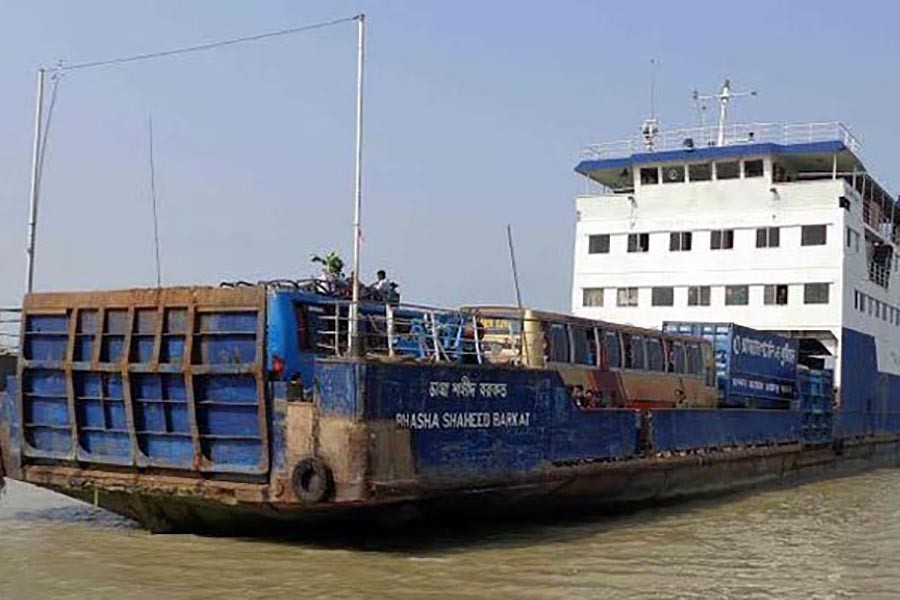Severe disruption of ferries on Shimulia-Kathalbari route across the Padma leading to long queues of vehicles on both sides of the river is nothing new. Usually, lack of navigability has of late been responsible for such disruptions. But this time it is for a different reason -strong current in the river. Once the mighty Padma was notorious for such strong currents, eddies and vortexes but for decades the river has lost its vigour. Yet in spate for a few days or weeks in the rainy season every year, it gives troubles to vessels ferrying people and vehicles across it. At times the ferry terminals at Paturia, Daulatdia, Shimulia and Kathalbari either go under waters or otherwise get affected rendering them useless. Early heavy rainfall in the country's north and on the other side of the border this time have already caused severe floods both in Bangladesh and Assam. The Padma has received its due share of the excess water coming down from the upper reaches of the Himalayas. No wonder smaller ferries fail to negotiate the strong currents from July 16 last.
The situation went from bad to worse on Friday last. One large ferry took 15 hours to reach Kathalbari from Shimulia. Another had to return to the terminal after five hours. The next day only three out of 13 could operate. When this happens, the queues of cars, buses, trucks and covered vans get only longer. Some vehicles were diverted to the Paturia-Daulatdia channel bringing it under heavy pressure. Quite naturally, queues of vehicles at those terminals also got longer, albeit not as hopelessly as at both ends of Shimulia and Kathalbari. The prediction is grim. Current in the river will be stronger in the days ahead of the Eid-ul-Azha. Although rush of home-bound people on the occasion of the second biggest festival of the country is expected to be lighter this time, the returnees may have to face a tough time.
The health ministry has asked the home ministry not to allow people to leave Dhaka and other large cities during the Eid, transports of all modes however will remain in operation. So a sizeable population will move either way with the majority embarking on their journey home. People from south and south-west regions either use the two routes now disrupted on account of ferries or waterways on which launches operate. So, in a way the ferry disruption at this time is not bad either because it will discourage people's movement.
However, transportation of goods - perishable items in particular - will also suffer. The floods have already destroyed vegetables in the north only weeks before their harvest. This has already triggered price hike of all kinds of vegetables. If those items rot during transportation now, it will compound the problem and further escalate prices in the kitchen market. As long as the Padma bridge does not become operational, the problem facing the Shimulia-Kathalbari and Paturia-Daulatdia channels cannot be overcome. In lean season large ferries cannot operate due to lack of navigability and in the monsoon, the smaller ones fail to negotiate strong currents. Advanced river dredging could be of help but vested interests have opted for misplaced priorities in order to waste money on limited dredging and also lining their pockets.


